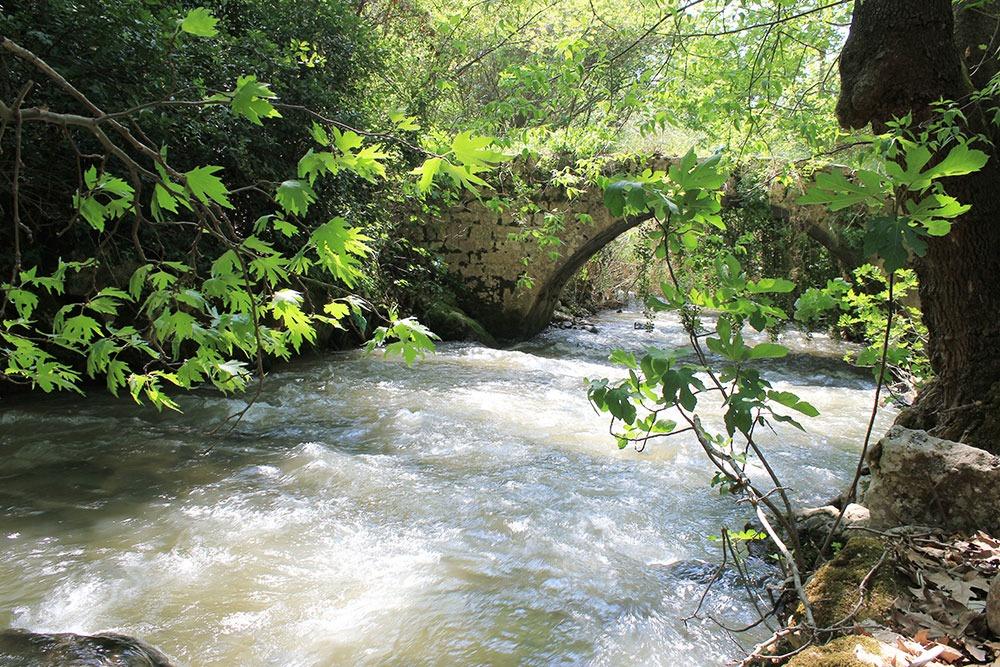
Beirut, Lebanon (Enmaeya News) — Historically known for its rivers, springs, and high annual rainfall, Lebanon is experiencing increasing water stress that now poses a serious risk to agriculture, public services, and households. Despite its natural water wealth, the country is facing annual droughts, desertification, and declining freshwater availability, with experts pointing to a combination of environmental changes and infrastructure challenges.
While climate change has contributed to shifting rainfall patterns and reduced snow accumulation, specialists emphasize that effective water management and infrastructure development remain key to mitigating the growing crisis.
Natural Resources Under Pressure
Lebanon’s geography has long given it a comparative advantage in water availability. The country contains over a dozen major rivers, thousands of springs, and significant groundwater reserves. Yet much of this water is no longer reaching households and farmland efficiently.
According to estimates, more than 50% of Beirut’s water is lost due to leakage in outdated pipes, while rural areas lose more than 65% through similar inefficiencies. Nationally, over half of surface water ends up in the sea without being stored or used due to limited reservoir capacity and insufficient infrastructure.
Experts say that improved maintenance, distribution networks, and storage systems could significantly reduce water losses and improve availability, especially in densely populated areas such as Greater Beirut, where nearly two million people live.
Scientific Findings Signal Urgency
A 2021 study by researchers Jad Saadeh, Maya Atieh, Sophia Ghanaymeh, and Golmar Golmohammadi highlighted a significant drop in water availability across Lebanon. The study found that only 37% of the population has access to safe drinking water, and just 20% to secure sanitation services.
Additionally, the flow of 12 major rivers has declined by more than 23% compared to levels recorded in 1965, with some rivers drying up for more than nine months of the year. About 60% of Lebanon’s natural springs have disappeared, while 60 seasonal streams have seen a 50% reduction in flow.
If current trends continue, the study projects that Lebanon may face a water shortfall of 610 million cubic meters by 2035. The country’s water storage capacity is currently around 6% of its total water resources—significantly lower than the Middle East and North Africa (MENA) average of 85%.
Economic impacts are also expected. The study estimated that reduced water supply for agriculture, household use, and industry could cost Lebanon $32 million annually by 2040, rising to $1.2 billion by 2080. Hydropower generation is also projected to decline, with estimated losses of $31 million by 2040 and $110 million by 2080.
Rising Household Costs and Reduced Consumption
On the individual level, Lebanese families are increasingly affected by the water crisis. Despite a reported 30% reduction in average personal water use, household expenses related to water are rising.
Data from Information International indicates that the average family spends approximately $40 per month on water through alternative sources such as bottled water or delivery trucks. With the newly adjusted minimum wage at $312 per month, water-related expenses now account for around 13% of a minimum-wage income—compared to 8% in Egypt and 6% in Iraq.
Agriculture and Food Security Concerns
The agricultural sector has been significantly impacted. Water shortages and drought have led to lower yields, with production sometimes dropping to 20% of normal levels during dry periods. In response, farmers are adopting modern irrigation techniques, while others are digging wells to access groundwater—often without formal permits.
While wells provide short-term relief, experts caution that overuse could harm aquifers, contribute to the disappearance of springs, and lead to saltwater intrusion and soil degradation.
According to the Lebanese Meteorological Service, rainfall in the 2024–2025 winter season dropped by more than 50% compared to the previous year. Combined with recent damage to southern farmlands during the the war—including fires caused by phosphorus munitions and access restrictions along border villages—the planted area has declined further.
The UN Food and Agriculture Organization (FAO) reports that grain production in 2024—covering essential crops like wheat, barley, and corn—fell by 38.4%. For 2025, the Integrated Food Security Phase Classification (IPC) system indicates that around 1.17 million people in Lebanon are facing crisis-level food insecurity (Phase 3), with many households reducing both the quantity and quality of their meals.
Rising wheat imports and a 13% drop in remittance inflows—Lebanon’s largest external funding source—have added pressure on food systems and household purchasing power.
Plans and Partnerships Moving Forward
In January 2025, the Ministry of Agriculture launched Lebanon’s first national drought management plan, in collaboration with the Arab Organization for Agricultural Development. More recently, Agriculture Minister Nizar Hani announced that water scarcity, desertification, and food sovereignty are among the ministry’s top priorities.
Separately, Finance Minister Yassine Jaber signed a $257.8 million agreement with the World Bank in May 2025 to upgrade Beirut’s water infrastructure and support broader reforms across the water and agricultural sectors. The project is part of a larger effort to modernize Lebanon’s resource management systems and reduce environmental vulnerability.
While implementation timelines remain uncertain, experts stress that improved planning, infrastructure investments, and water-use efficiency will be crucial to ensure sustainable supply in the years ahead.



